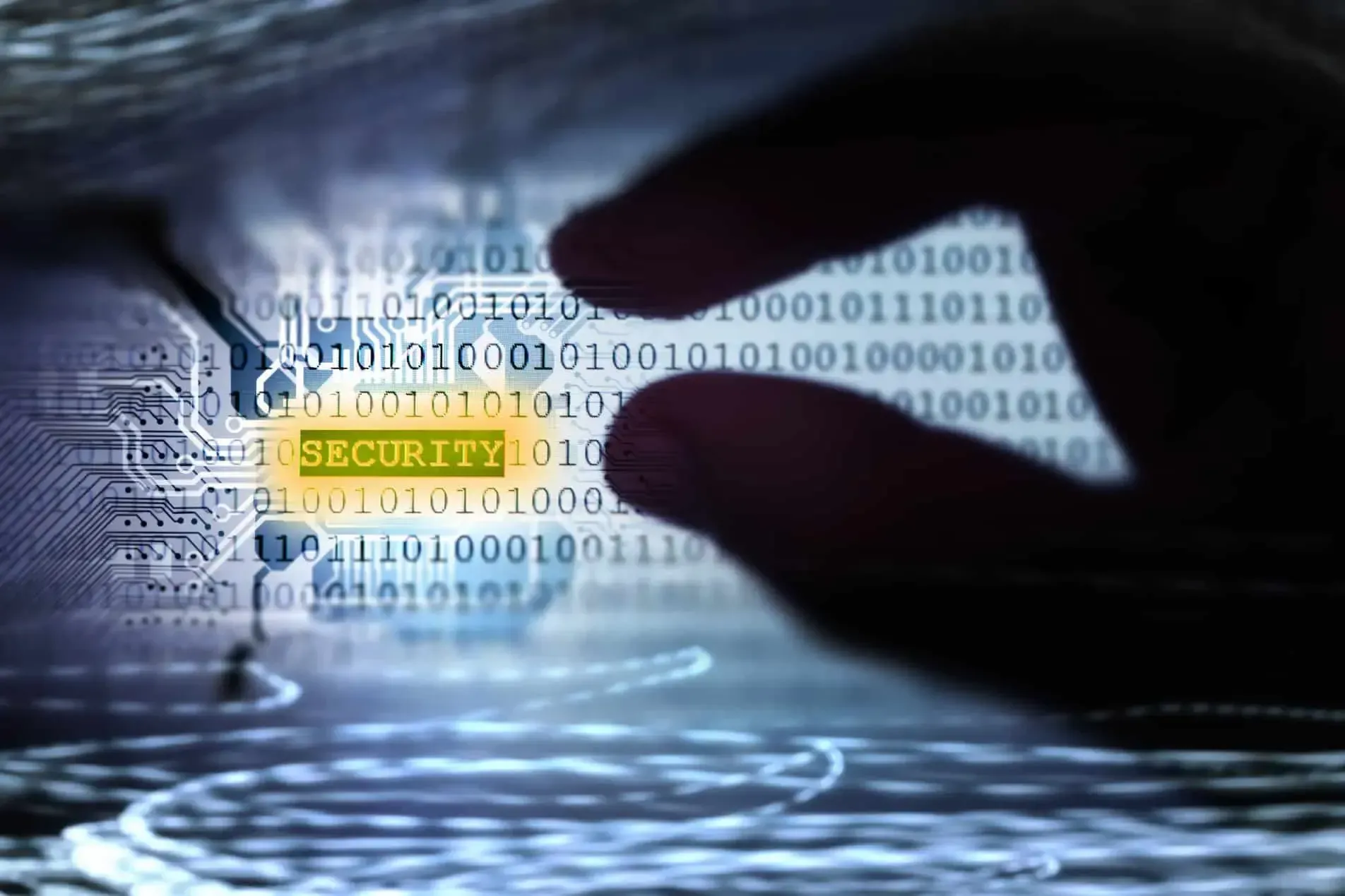Why you should never neglect physical security
-
It’s a common occurrence in today’s modern world that virtually all organisations have a considerable budget (or a strong focus on) information and cyber security. Often, larger organisations spend millions annually on significant improvements to their security program or framework, yet overlook arguably the most fundamental basics which should be (but are often not) the building blocks of any fortified stronghold.
We’ve spent so much time concentrating on the virtual aspect of security and all that it encompasses, but seem to have lost sight of what should arguably be the first item on the list – physical security. It doesn’t matter how much money and effort you plough into designing and securing your estate when you consider how vulnerable and easily negated the program or framework is if you neglect the physical element. Modern cyber crime has evolved, and it’s the general consensus these days that the traditional perimeter as entry point is rapidly losing its appeal from the accessibility versus yield perspective. Today’s discerning criminal is much more inclined to go for a softer and predictable target in the form of users themselves rather than spend hours on reconnaissance and black box probing looking for backdoors or other associated weak points in a network or associated infrastructure.
Physical vs virtual
So does this mean you should be focusing your efforts on the physical elements solely, and ignoring the perimeter altogether ? Absolutely not – doing so would be commercial suicide. However, the physical element should not be neglected either, but instead factored into any security design at the outset instead of being an afterthought. I’ve worked for a variety of organisations over my career – each of them with differing views and attitudes to risk concerning physical security. From the banking and finance sector to manufacturing, they all have common weaknesses. Weaknesses that should, in fact, have been eliminated from the outset rather than being a part of the everyday activity. Take this as an example. In order to qualify for buildings and contents insurance, business with office space need to ensure that they have effective measures in place to secure that particular area. In most cases, modern security mechanisms dictate that proximity card readers are deployed at main entrances, rendering access impossible (when the locking mechanism is enforced) without a programmed access card or token. But how “impossible” is that access in reality ?
Organisations often take an entire floor of a building, or at least a subset of it. This means that any doors dividing floors or areas occupied by other tenants must be secured against unauthorised access. Quite often, these floors have more than one exit point for a variety of health and safety / fire regulation reasons, and it’s this particular scenario that often goes unnoticed, or unintentionally overlooked. Human nature dictates that it’s quicker to take the side exit when leaving the building rather than the main entrance, and the last employee leaving (in an ideal world) has the responsibility of ensuring that the door is locked behind them when they leave. However, the reality is often the case instead where the door is held open by a fire extinguisher for example. Whilst this facilitates effective and easy access during the day, it has a significant impact to your physical security if that same door remains open and unattended all night. I’ve seen this particular offence repeatedly committed over months – not days or weeks – in most organisations I’ve worked for. In fact, this exact situation allowed thieves to steal a laptop left on the desk in an office of a finance firm I previously worked at.
Theft in general is mostly based around opportunity. As a paradigm, you could leave a £20 note / $20 bill on your desk and see how long it remained there before it went missing. I’m not implying here that anyone in particular is a thief, but again, it’s about opportunity. The same process can be aligned to Information security. It’s commonplace to secure information systems with passwords, least privilege access, locked server rooms, and all the other usual mechanisms, but what about the physical elements ? It’s not just door locks. It’s anything else that could be classed as sensitive, such as printed documents left on copiers long since forgotten and unloved, personally identifiable information left out on desks, misplaced smartphones, or even keys to restricted areas such as usually locked doors or cupboards. That 30 second window could be all that would be required to trigger a breach of security – and even worse, of information classed as sensitive. Not only could your insurance refuse to pay out if you could not demonstrate beyond reasonable doubt that you had the basic physical security measures in place, but (in the EU) you would have to notify the regulator (in this case, the ICO) that information had been stolen. Not only would it be of significant embarrassment to any firm that a “chancer” was able to casually stroll in and take anything they wanted unchallenged, but significant in terms of the severity of such an information breach – and the resultant fines imposed by the ICO or SEC (from the regulatory perspective – in this case, GDPR) – at €20m or 4% of annual global (yes, global) turnover (if you were part of a larger organisation, then that is actually 4% of the parent entity turnover – not just your firm) – whichever is the highest. Of equal significance is the need to notify the ICO within 72 hours of a discovered breach. In the event of electronic systems, you could gain intelligence about what was taken from a centralised logging system (if you have one – that’s another horror story altogether if you don’t and you are breached) from the “electronic” angle of any breach via traditional cyber channels, but do you know exactly what information has taken residence on desks ? Simple answer ? No.
It’s for this very reason that several firms operate a “clean desk” policy. Not just for aesthetic reasons, but for information security reasons. Paper shredders are a great invention, but they lack AI and machine learning to wheel themselves around your office looking for sensitive hard copy (printed) data to destroy in order for you to remain compliant with your information security policy (now there’s an invention…).
But how secure are these “unbreakable” locks ? Despite the furore around physical security in the form of smart locks, thieves seem to be able to bypass these “security measures” with little effort. Here’s a short video courtesy of ABC news detailing just how easy it was (and still is in some cases) to gain access to hotel rooms using cheap technology, tools, and “how-to” articles from YouTube.
Surveillance systems aren’t exempt either. As an example, a camera system can be rendered useless with a can of spray paint or even something as simple as a grocery bag if it’s in full view. Admittedly, this would require some previous reconnaissance to determine the camera locations before committing any offence, but it’s certainly a viable prospect of that system is not monitored regularly. Additionally, (in the UK at least) the usage of CCTV in a commercial setting requires a written visible notice to be displayed informing those affected that they are in fact being recorded (along with an impact assessment around the usage), and is also subject to various other controls around privacy, usage, security, and retention periods.
Unbreakable locks ?
Then there’s the “unbreakable” door lock. Tapplock advertised their “unbreakable smart lock” only to find that it was vulnerable to the most basic of all forced entry – the screwdriver. Have a look at this article courtesy of “The Register”.
In all seriousness, there aren’t that many locks that cannot be effectively bypassed. Now, I know what you’re thinking. If the lock cannot be effectively opened, then how do you gain entry ? It’s much simpler than you think. For a great demonstration, we’ll hand over to a scene from “RED” that shows exactly how this would work. The lock itself may have pass-code that “…changes every 6 hours…” and is “unbreakable”, but that doesn’t extend to the material that holds both the door and the access panel for the lock itself.
And so onto the actual point. Unless your “unbreakable” door lock is housed within fortified brick or concrete walls and impervious to drills, oxy-acetylene cutting equipment, and proximity explosive charges (ok, that’s a little over the top…), it should not be classed as “secure”. Some of the best examples I’ve seen are a metal door housed in a plasterboard / false wall. Personally, if I wanted access to the room that badly, I’d go through the wall with the nearest fire extinguisher rather than fiddle with the lock itself. All it takes is to tap on the wall, and you’ll know for sure if it’s hollow just by the sound it makes. Finally, there’s the even more ridiculous – where you have a reinforced door lock with a viewing pane (of course, glass). Why bother with the lock when you can simply shatter the glass, put your hand through, and unlock the door ?
Conclusion
There’s always a variety of reasons as to why you wouldn’t build your comms room out of brick or concrete – mostly attributed to building and landlord regulations in premises that businesses occupy. Arguably, if you wanted to build something like this, and occupied the ground floor, then yes, you could indeed carry out this work if it was permitted. Most data centres that are truly secure are patrolled 24 x 7 by security, are located underground, or within heavily fortified surroundings. Here is an example of one of the most physically secure data centres in the world.
Virtually all physical security aspects eventually circle back to two common topics – budget, and attitude to risk. The real question here is what value you place on your data – particularly if you are a custodian of it, but the data relates to others. Leaking data because of exceptionally weak security practices in today’s modern age is an unfortunate risk – one that you cannot afford to overlook.
What are your thoughts around physical security ?
Hello! It looks like you're interested in this conversation, but you don't have an account yet.
Getting fed up of having to scroll through the same posts each visit? When you register for an account, you'll always come back to exactly where you were before, and choose to be notified of new replies (ether email, or push notification). You'll also be able to save bookmarks, use reactions, and upvote to show your appreciation to other community members.
With your input, this post could be even better 💗
RegisterLog in




